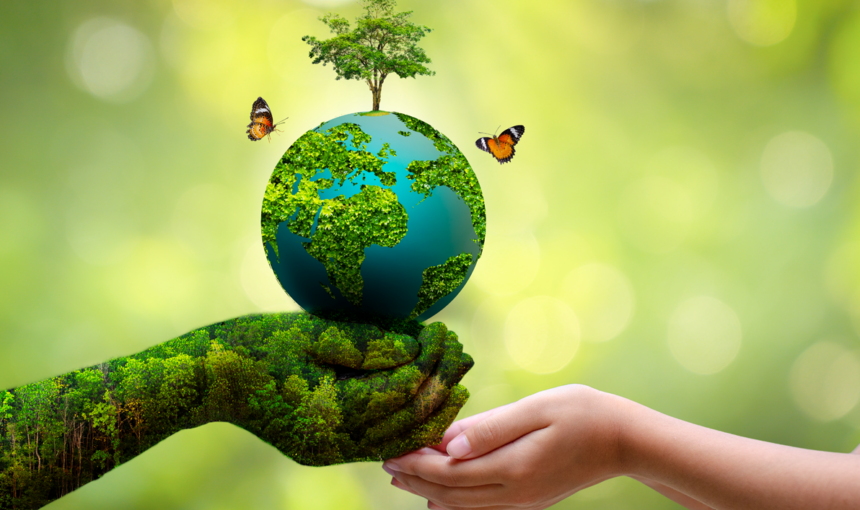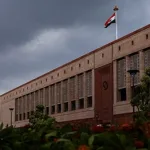WORLD ENVIRONMENT DAY
As the world grapples with environmental challenges, World Environment Day (WED) serves as a poignant reminder of the urgent need for collective action. This year the theme, “Restoring Degraded Land into Productive Assets,” Our land, Our future calls attention to one of the most pressing issues of our time – land degradation driven by factors such as deforestation, unsustainable agriculture, urbanization, and climate change is posing a grave threat to ecosystems and livelihoods worldwide. Land degradation by itself or in combination with climate change, can have profound implications for natural resource-based livelihood systems, food security, economies, biodiversity, and the overall well-being of communities worldwide. It is a cause of concern and calls for concerted efforts to address the same.
Land restoration is a key pillar of the UN Decade on Ecosystem Restoration (2021-2030), a rallying call for the protection and revival of ecosystems all around the world. Land degradation is also a part of Sustainable Development Goal 15 which calls for reversing the same. 2024 will mark the 30th anniversary of the UN Convention to Combat Desertification (UNCCD) adopted in 1994.India, being a party to the Convention has committed to attain land neutrality and restore 26 lakh hectares of degraded land by 2030. From 2015-2019, 30.51 million hectares of India’s total reported land was degraded, according to United Nations Convention to Combat Desertification (UNCCD) data. This means that 9.45 per cent of the country’s landmass was degraded as of 2019. This was 4.42 per cent in 2015. India’s total degraded land is equivalent to the size of 43 million football pitches, according to UNCCD.
Land degradation in drylands is known as desertification and is the loss of biological or economic productivity of land. Desertification reduces agricultural output, contributes to droughts and increases human vulnerability to climate change. The number and duration of droughts has increased by 29 per cent since 2000 – without urgent action, droughts may affect over three-quarters of the world’s population by 2050 (WMO 2021).Of the world’s 1.2 billion hectares with moderate to severe land degradation the largest areas are in Asia and Africa. Central America has the highest percentage and worst degrees of land degradation. (International soil reference & information centre, ISRIC).However, amidst these challenges lies an opportunity for transformation.
Many countries facing land degradation are focusing on turning the unproductive land into healthy and resourceful land so as to bring economic resilience and to counter the food insecurity. The UAE has launched the “Greening the Desert” initiative, which involves planting native vegetation and implementing sustainable agriculture practices in arid areas. Innovation, such as using treated wastewater for irrigation and developing drought-resistant crops is part of their strategy to combat Desertification. Central American Countries participate in REDD+ (Reducing Emissions from Deforestation and Forest Degradation) Program which incentivizes the conservation of forests to help combat land degradation. Mesoamerican Biological Corridor (MBC) aims to connect protected areas across Central America to preserve biodiversity and promote sustainable land use. African Forest Landscape Restoration Initiative (AFR 100) aims to restore 100 million hectares of deforested and degraded landscapes across Africa by 2030.
China is investing heavily in afforestation and reforestation programFocusing on converting barren lands into productive forests for combating Desertification. Australia faces challenges with land degradation in certain regions. Sustainable agriculture practices, including precision farming, minimum tillage, and the use of cover crops, are implemented to prevent soil erosion and improve land quality.India launched the National Mission for a Green India, which focuses on afforestation, reforestation, and improving biodiversity to combat desertification.
In Kashmir, a region blessed with natural beauty, the importance of land restoration cannot be overstated. From the lush valleys to the towering mountains, every inch of land plays a crucial role in sustaining ecosystems and supporting livelihoods. However, rapid urbanization, unsustainable land use practices, encroachments, and population growth are putting immense pressure on the region’s delicate ecosystems. One of the primary drivers of land degradation in Kashmir is deforestation, often driven by the conversion of forests into agricultural land or for urban development.
Rampant deforestation disrupts the delicate ecological balance, leading to soil erosion, loss of biodiversity, and diminished water retention capacity. Unsustainable agricultural practices characterized by excessive use of chemical fertilizers, pesticides, and monoculture cropping. Such practices degrade soil quality, reduce fertility, and contribute to land degradation over time. The steep terrain of Kashmir makes it particularly vulnerable to soil erosion and landslides, especially in areas where deforestation, inappropriate land use, and improper land management practices prevail.
By restoring degraded land, we can not only mitigate the impacts of environmental degradation but also create sustainable and productive landscapes for future generations. Restoring degraded land involves a multifaceted approach, ranging from afforestation and reforestation to sustainable land management practices. By harnessing the power of nature-based solutions, such as agroforestry and soil conservation techniques, communities can revitalize degraded ecosystems while enhancing their resilience to climate change.
Revitalizing degraded land can start a virtuous cycle of good soil health, increased land productivity, food security and improved livelihoods. No matter where we live, the consequences of desertification and drought concern all of us. According to the UNCCD (UN Convention to Combat Desertification), 25% of the world’s land area is either highly degraded or undergoing high rates of degradation and is no longer productive. On this World Environment Day, let us reaffirm our commitment to restoring degraded land and building a sustainable future for all. By working together, we can turn the tide of environmental degradation and ensure that our planet remains a vibrant and thriving home for generations to come.
(Author holds Master’s in Environmental Science from Kashmir University. She teaches at Kashmir Harvard Higher Secondary Institute, Habak Naseem Bagh Srinagar and can be mailed at [email protected])








